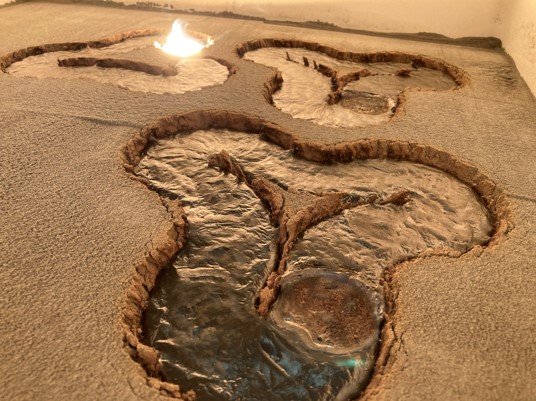The Moon is not a hospitable place. The lunar regolith – the Moon’s soil – is a dusty collection of sharp, abrasive, and possibly toxic particles that can cling to spacesuits, damage equipment, and even caused one of the Apollo astronauts to develop an allergic reaction to it. Apollo 17’s Harrison Schmitt called it lunar hay fever. It would be easier for astronauts to work and land in places where the regolith was a solid slab – and researchers might have found a way to do just that.
A research team led by Ginés-Palomares, Miranda Fateri, and Jens Günster used a carbon dioxide laser to see if they could melt lunar regolith into something safer and sturdier. However, they did not use real lunar soil but a simulated version created by the European Space Agency.
“What sets this research apart is the utilization of an energy beam with a maximum diameter of 100 millimeters [4 inches] and a maximum power output of 12 kW, which represents a novel approach not employed in prior studies,” the authors told IFLScience.

The laser melted some tiles from the regolith simulant.
Image Credit: Jens Günster, BAM
The team realized that a single passage from the laser was enough to create a thick slab but repeated passages would actually lead to cracks in the material. So they used a 45-millimeter (1.77-inch) laser to design rounded “triangular” tiles that could be combined into a surface like a road or launchpad.
“Research has demonstrated that a relatively thick layer of lunar regolith (approximately 25 millimeters [1 inch]) can be melted with a single beam pass. However, a significant limitation was observed when multiple overlapping paths were attempted, resulting in cracks in the material. Nevertheless, this challenge has led to the development of interlocking elements that eliminate overlaps for paving large areas on the Moon,” the researchers explained to IFLScience.
The research needs further work but the team considered what would be needed to do this on the Moon in the near future. The most practical solution would be to use a lens and employ concentrated sunlight into a tight beam on the regolith.
If you have ever used a magnifying glass and light to turn a piece of paper into an old-looking map or scroll by burning its edges, you know the drill. You place your lens at the right distance, sunlight is collimated and melts your target. The team believes that a lens of 2.37 square meters (25.51 square feet) would be enough to do the job of the laser. If it were circular, that would mean a lens with a radius of 87 centimeters (34 inches).
Unlike lasers or mirrors, the lens approach has advantages in terms of energy requirements, cooling, and infrastructure. So maybe, a large magnifying glass might soon be deployed to the Moon to literally pave the way for astronauts.
The research is published in the journal Scientific Reports.
Source Link: Lasers And Lenses Could Be Used To Make Roads On The Moon